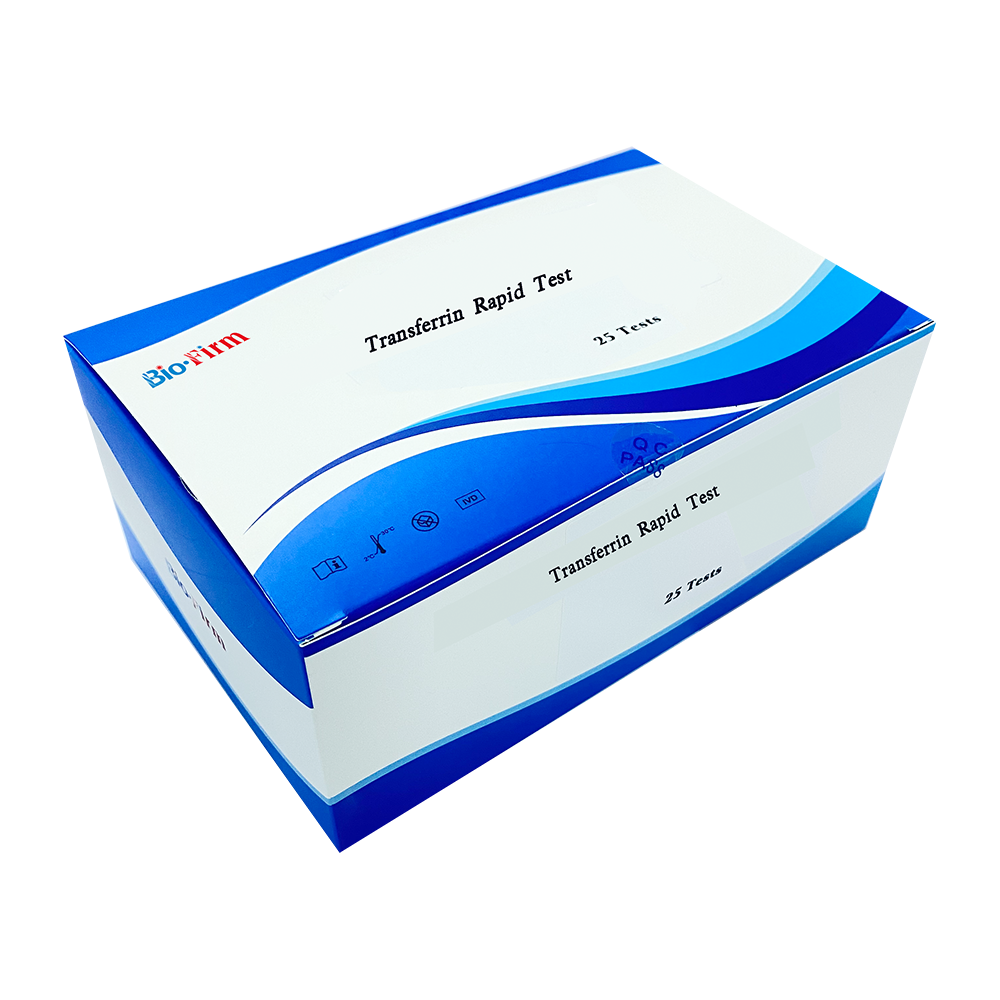Jul 01,2022
The significance of detecting upper gastrointestinal (GI) tract bleeding using the transferrin antigen rapid test lies in its ability to identify internal bleeding early, which is a key symptom of various serious medical conditions, including ulcers, gastritis, esophageal varices, and even cancer. Here’s why detecting upper GI bleeding is crucial:
Early Diagnosis of Serious Conditions
Peptic Ulcers and Gastritis: Upper GI bleeding is often caused by peptic ulcers or gastritis, conditions that can be managed effectively if detected early. Identifying transferrin, a protein found in blood, in stool samples helps doctors quickly diagnose these conditions before they lead to more severe complications, such as perforation or hemorrhage.
Esophageal Varices: In patients with liver disease or cirrhosis, bleeding from esophageal varices can be life-threatening. The rapid detection of bleeding through the transferrin antigen test allows for timely medical intervention.
Specificity for Upper GI Bleeding
Stability of Transferrin: Transferrin is a protein that remains relatively stable as it passes through the digestive system. Unlike hemoglobin, which may be broken down in the lower GI tract, transferrin can still be detected in stool after upper GI bleeding. This makes it a reliable marker for identifying bleeding higher up in the digestive system, such as from the stomach or esophagus.
Differentiating Upper vs. Lower GI Bleeding: The transferrin antigen rapid test, by detecting the presence of transferrin in stool, provides a clue as to whether the bleeding is from the upper GI tract (e.g., stomach or esophagus) rather than the lower GI tract. This distinction is important because the causes and treatments of upper and lower GI bleeding can differ.

Non-Invasive and Quick Diagnosis
Rapid and Accessible Testing: The transferrin antigen rapid test offers a non-invasive way to screen for upper GI bleeding, which would otherwise require more invasive diagnostic procedures such as endoscopy. With its ability to provide quick results, this test allows healthcare providers to diagnose and begin treatment earlier.
Widespread Screening: Because the test is easy to use, it can be employed in various clinical settings and even at home, facilitating broader screening for upper GI bleeding in at-risk populations, such as those with chronic NSAID use, alcohol abuse, or liver disease.
Prevention of Severe Complications
Preventing Anemia and Shock: Prolonged or severe upper GI bleeding can lead to anemia, fatigue, and even hypovolemic shock if not treated promptly. Early detection through transferrin testing can help prevent these complications by enabling timely medical intervention.
Minimizing the Need for Emergency Procedures: Early identification of upper GI bleeding allows for earlier, non-emergency treatments (e.g., medication or endoscopic procedures), reducing the need for urgent, high-risk surgeries or emergency hospitalizations.
Monitoring Chronic Conditions
Management of Chronic GI Disorders: Patients with conditions like Crohn’s disease, celiac disease, or gastritis may experience intermittent upper GI bleeding. Regular screening with the transferrin antigen rapid test can help monitor these patients for flare-ups or complications, allowing for more effective long-term management.
Detecting upper GI tract bleeding using the transferrin antigen rapid test is significant because it allows for early diagnosis of potentially life-threatening conditions, helps distinguish between upper and lower GI sources of bleeding, and provides a non-invasive, quick, and reliable method for screening. This early detection helps prevent complications like anemia and shock while facilitating timely treatment of underlying conditions.



 Español
Español
 Français
Français
 Deutsch
Deutsch
 عربى
عربى








